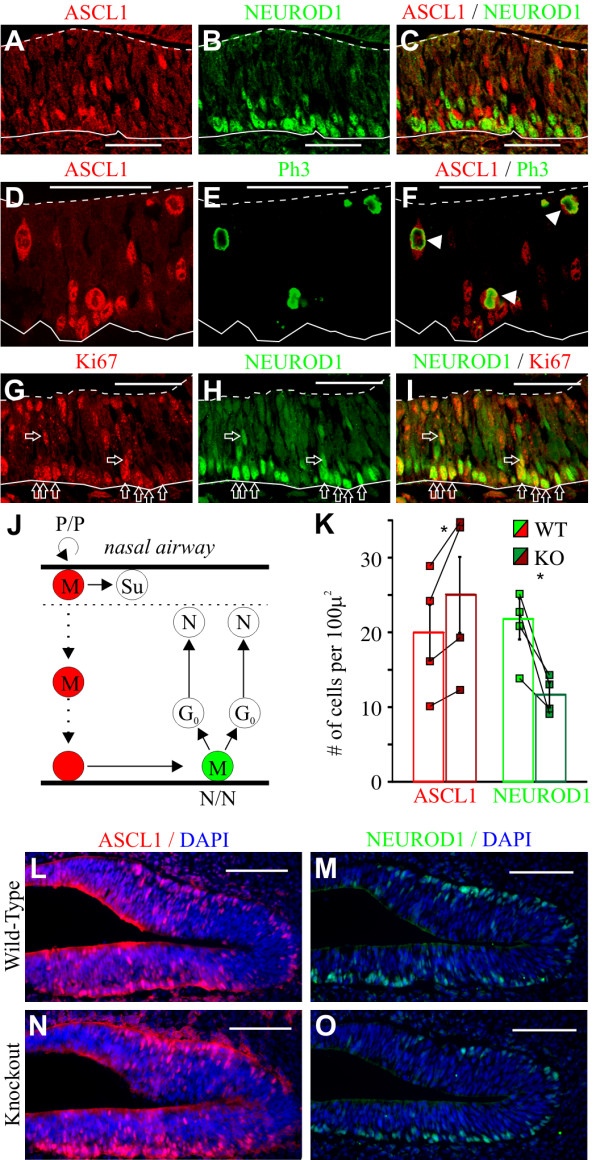Figure 7.

Increase in the number of progenitors expressing ASCL1 (MASH1) and decrease in those expressing NEUROD1 in Insm1-/- embryonic OE. (A-I) Coronal sections of E12.5 wild type OE. Solid lines delineate basal lamina and dashed lines apical edges. (A-C) Antibodies to ASCL1 and NEUROD1 label largely different subsets of progenitors. (D-F) ASCL1 is expressed in cells located across the epithelium (see also (A)), as expected for TAPs transitioning through intermediate cell layers. Some ASCL1-expressing cells at apical and intermediate positions express pH3 (arrowheads), confirming they are progenitors. (G-I) NEUROD1-expressing cells are at the basal edge and 79% of them also express the cell-cycle marker Ki67 (arrows; n = 3 sections of OE from 2 embryos), indicating that NEUROD1 is expressed in basal progenitors. (J) Representation of a TAP, expressing ASCL1 and migrating from the apical airways to the basal lamina, where Ascl1 is downregulated, NeuroD1 is upregulated, and NEUROD1+ cells (INPs) divide terminally to produce neurons ('N'; 'M' represents mitotic cells, G0 postmitotic cells and Su sustentacular cells). (K, L) Increase in ASCL1-expressing cells (P < 0.05; n = 4 embryo pairs, total of 12 anatomically aligned sections; compare (L) and (N)) and decrease in NEUROD1-expressing cells (P < 0.05; n = 4 embryo pairs, total of 12 anatomically aligned sections; compare (N) and (O)) in the OE of Insm1-/- embryos (compared to Insm1+/+ and Insm1+/- littermates). (K) Quantification. (L-O) Coronal sections of E12.5 OE from Insm1-/- and Insm1+/+ labeled with markers of nuclei (DAPI), presumed TAPs (ASCL1) and presumed terminally dividing neuronogenic progenitors (NEUROD1). Dorsal is to the right and septal toward the bottom. Data in (K) are presented as mean of all data (columns) ± standard error of the mean (SEM) (vertical bars). *P ≤ 0.05. Small squares depict the average density of each embryo, and values from each anatomically paired section are connected by oblique lines. Scale bars: 50 μm (A-I); 100 μm (L-O). KO, knockout; WT, wild type.
